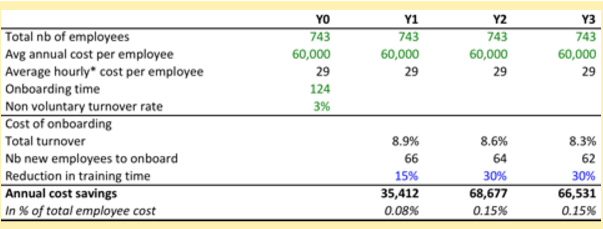

The higher rates are likely a result of the pandemic-related restrictions placed on many retail businesses over 2021. Pandemic-related cost pressures have forced universities, the main component of the Cendex sample in this sector, to make redundancies affecting both support and academic roles.įollowing the not-for-profit sector, retail and wholesale companies had the second-highest voluntary labour turnover of 10.3% and a total labour turnover of 15.2%. The most notable gulf between total turnover and voluntary turnover, within a specific sector, was found in the education sector, where voluntary turnover stood at 8.7%, whereas total labour turnover stood at 15.5%. While much attention has been given to the ‘ Great Resignation’, a rise in employees quitting their jobs, not all employee attrition during this time was a voluntary basis. Within the public services sector, there was a higher level of employee departures, with a total labour turnover rate of 15.6% and a voluntary labour turnover rate of 8.8%. Organisations in the not-for-profit sector saw much higher rates of staff moves with a total labour turnover of 18.1%, and a voluntary labour turnover of 12.5%, the highest of all sectors surveyed.įor those private sector companies, the voluntary turnover rate was 8.7%, with a total labour turnover rate of 11.7%. Among them, half (51%) have delivered more counteroffers than before, with 40% offering the same level and 9% offering less than before.Ĭounteroffers often exceed value of existing offerĪmong employers giving counteroffers, 40% offer a higher salary, 38% salary match, and 9% offer a salary below the offer.According to an analysis of labour turnover between January 2021 and January 2022, by Cendex, part of XpertHR, the total labour turnover of all companies surveyed stood at 14.4%, whilst voluntary labour turnover was at 9.5%.
#AVERAGE TURNOVER RATE IN MANUFACTURING 2022 SERIES#
The figure for the public sector has risen from 3.3% last quarter, to 4% this quarter – the highest in the LMO time series (since 2012).Ĭounteroffers more common in past 12 monthsįorty per cent of employers have made a counteroffer in the past 12 months. The median expected basic pay increase remains at 5% for the third consecutive quarter. This impact is particularly pertinent in the hospitality sector, where 43% of employers are feeling the pinch, possibly due to the number of lower-paid workers they employ.Įxpected pay rises in public sector hit new peak



One in five employers (18%) believe increases in the National Minimum Wage (NMW)/National Living Wage (NLW) have impacted their wage bill to a large extent. Both industries anticipate significant problems filling their hard-to-fill vacancies in the next six months (42% and 44%).Įmployers with low-wage staff hit hard by NMW increase These are most prevalent among employers in education (60%) and healthcare (55%). Two in five of employers (42%) have hard-to-fill vacancies. Redundancy intentions rising in the public sector However, they have fallen in the public sector in the most recent quarter, from +16 to +11, and have risen in the voluntary sector (from +22 to +34). Net employment intentions remain steady in the private sector at +32. The net employment balance – which measures the difference between employers expecting to increase staff levels in the next three months and those expecting to decrease staff levels – remains stable at +28.


 0 kommentar(er)
0 kommentar(er)
